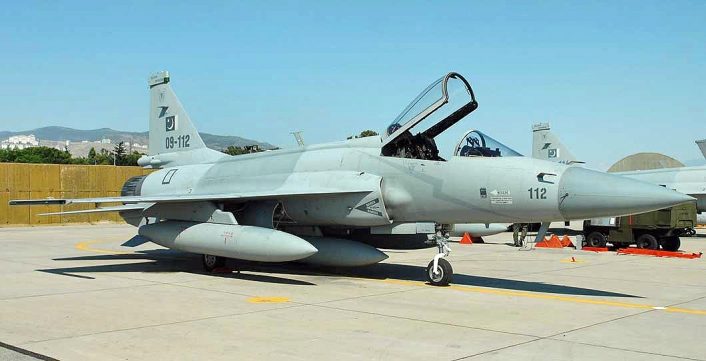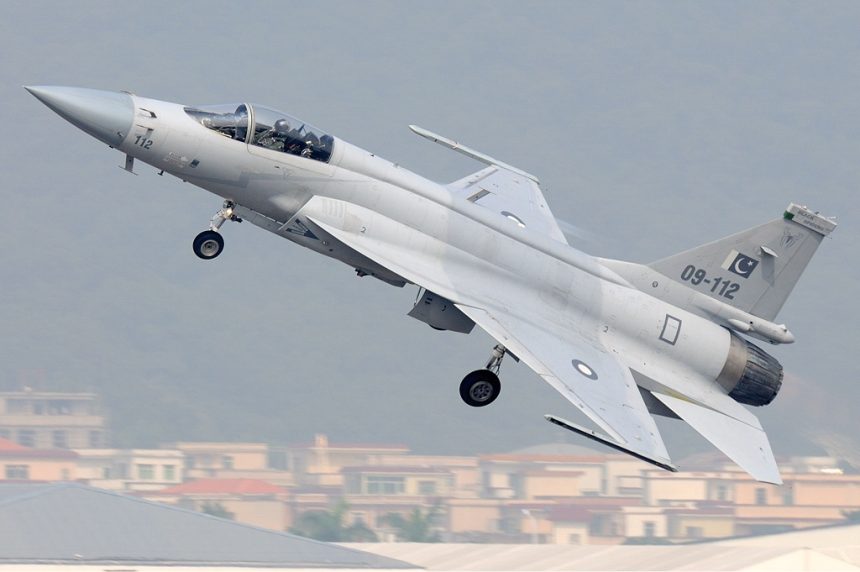Cheap, Easy, Available: Asia’s JF-17 Thunder Contrasts U.S. and Russian Tactical Aircraft.
Develop it faster, build it cheaper and make it more available. From electronics to automobiles, the Asian doctrine of the 20th century. With the rush toward globalization and the blurring of borders in the internet age, manufactured products in every category move across borders and subvert political boundaries with impunity.
Tactical combat aircraft may be the next category.
Traditionally, high level defense and aerospace programs have been slow to move toward global distribution largely because of regional security concerns, partially because of technology concerns, and definitely because of economic concerns. But those concerns may be taking a back seat to the new priorities of updating old air forces as new political boundaries and alliances are drawn, and old ones are erased.
Enter the Chinese and Pakistani co-manufactured PAC JF-17 Thunder tactical aircraft, also referred to as the CAC FC-1 Xiaolong or “Fierce Dragon”. The JF-17 is a lightweight, single-engine, multi-role combat aircraft developed from a joint venture between the Pakistan Aeronautical Complex (PAC) and the Chengdu Aircraft Corporation (CAC) of China.
In the ethos of eastern imports competing with western aircraft like the Lockheed Martin F-35 Lightning II Joint Strike Fighter program, the JF-17 Thunder can be hawked as “better, cheaper, faster” to many end users who could not afford to participate in the U.S. Joint Strike Fighter program for political or financial reasons or both. While the “better” and “faster” are certainly doubtful, the “cheaper” is set in stone. For many countries, that is the single most important acquisition metric; affordability.
Global political change has mandated the need for new mass-market, non-western import/export multi-role tactical aircraft. When the former Soviet Warsaw Pact defense industry collapsed along with the Iron Curtain at the end of the Cold War it left huge inventories of largely Russian-built tactical aircraft in service with third world air forces.
The Russian-built MiGs and Sukhois in African and Arab service were sturdy, easy to maintain and designed to operate in austere conditions. They were perfect for air forces in developing nations. When countries engaged in a greater or lesser degree of political alignment with the former Soviet Union, the price of the Russian-built tactical aircraft went down, sometimes to zero in lend-lease or other political machinations.
But those old Eastern Bloc, Cold War Russian planes supplied to banana republic countries and oil nations with shifting global agendas are wearing out, and many of the lines that separated the countries who use them have been erased and redrawn in the Arab Spring and the new Africa. These changes have created a market for a new, affordable, regionally capable fighter plane. The Chinese and Pakistani JF-17 may fill that need.

The generic looking, “no-brand” JF-17 is what most people would sketch on a napkin to show what jet fighters look like. It is quite unremarkable by 5th generation combat aircraft standards. If U.S. wholesale retailers Costco or Sam’s Club sold fighter planes, they would sell the JF-17. The JF-17 probably may have more in common with the 1950’s F-100 Super Saber than the current F-35 Joint Strike Fighter.
In numbers, a JF-17 Thunder costs (approximately) between $25 million USD-$32 million USD, depending on the tranche and avionics version. Contrast that with the $94 million to $134 million USD price tag of the F-35 Joint Strike Fighter. If you are a sales agent for the Chinese/Pakistan consortium building the JF-17 one of the first lines in your pitch at the Paris or Dubai Air Show will be, “For the price of one F-35 you can fly almost four JF-17s!” Then you open your slick PowerPoint (in one of 6 languages) and back up your sales pitch with shorter training cycles for air crew, lower maintenance cost, easier and faster acquisition, and on and on.

If you are selling the JF-17 Thunder it is unlikely you will be courting the same prospective market as F-35 program participants. And you will certainly do well to also stay away from comparisons about capability, because comparing an F-35 Joint Strike Fighter in any version to the JF-17 Thunder is like comparing a Bomar Brain pocket calculator from the 1970’s to a new MacBook Pro computer. They are completely different products.
But the JF-17 is still a capable aircraft that is well-engineered for a burgeoning market of basic tactical aircraft consumer nations. To date, operators include Myanmar, Nigeria and Pakistan. Countries that have indicated, at some point, an interest in the project include Argentina, Algeria, Bangladesh, Egypt, Qatar, Iran, Lebanon, Malaysia, Morocco, Saudi Arabia, Sri Lanka and Uruguay.
Given the dynamic nature of global politics and fluid changes in alliances the JF-17 fills a niche for many countries. That alone is reason to be familiar with it.
Top image credit: Shimin Gu








